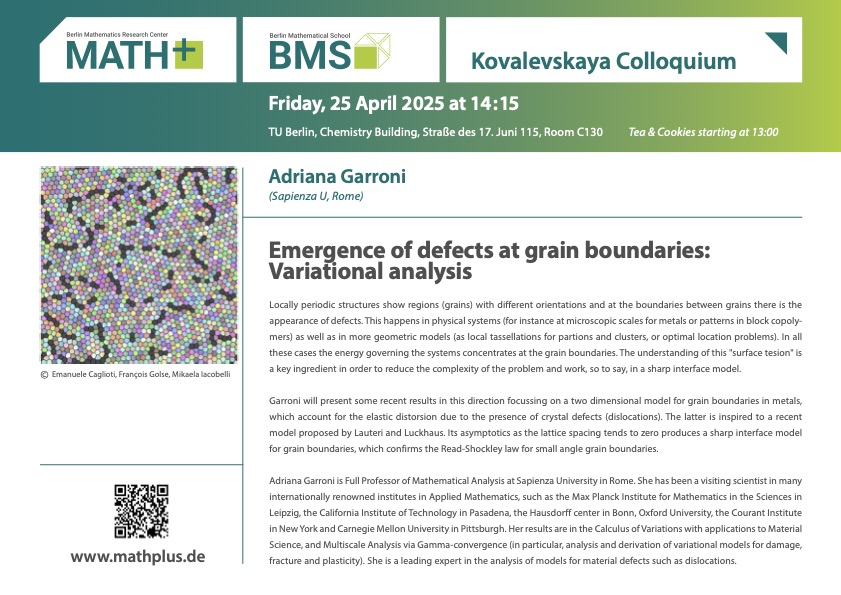25 April – Adriana Garroni: Emergence of defects at grain boundaries: Variational analysis
Locally periodic structures show regions (grains) with different orientations and at the boundaries between grains there is the appearance of defects. This happens in physical systems (for instance at microscopic scales for metals or patterns in block copolymers) as well as in more geometric models (as local tassellations for partions and clusters, or optimal location problems). In all these cases the energy governing the systems concentrates at the grain boundaries. The understanding of this “surface tesion” is a key ingredient in order to reduce the complexity of the problem and work, so to say, in a sharp interface model.
Garroni will present some recent results in this direction focussing on a two dimensional model for grain boundaries in metals, which account for the elastic distorsion due to the presence of crystal defects (dislocations). The latter is inspired to a recent model proposed by Lauteri and Luckhaus. Its asymptotics as the lattice spacing tends to zero produces a sharp interface model for grain boundaries, which confirms the Read-Shockley law for small angle grain boundaries.
Adriana Garroni is Full Professor of Mathematical Analysis at Sapienza University in Rome. She has been a visiting scientist in many internationally renowned institutes in Applied Mathematics, such as the Max Planck Institute for Mathematics in the Sciences in Leipzig, the California Institute of Technology in Pasadena, the Hausdorff center in Bonn, Oxford University, the Courant Institute in New York and Carnegie Mellon University in Pittsburgh. Her results are in the Calculus of Variations with applications to Material Science, and Multiscale Analysis via Gamma-convergence (in particular, analysis and derivation of variational models for damage, fracture and plasticity). She is a leading expert in the analysis of models for material defects such as dislocations.


